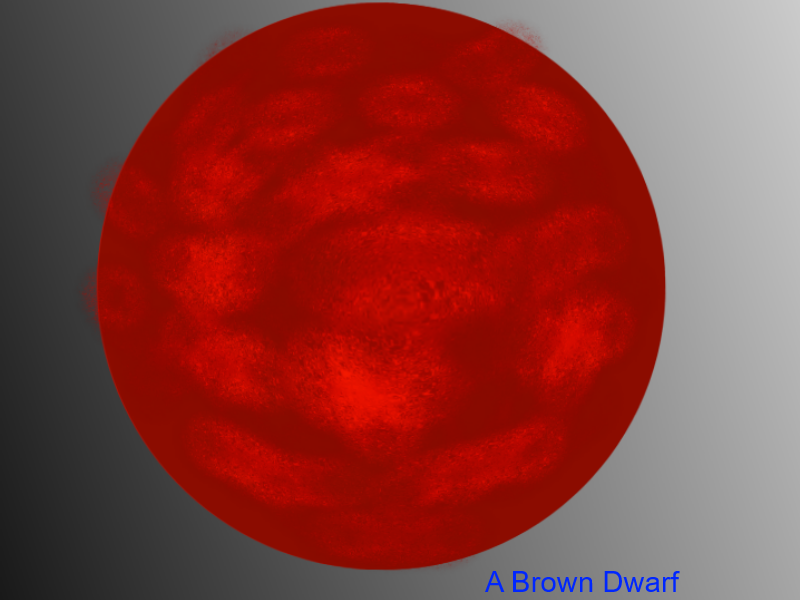Story of a Star - A Brown Dwarf
What is a Brown Dwarf?
Simply, a Brown Dwarf is a Failed Star. We know that all the stars start their journey from the part of a nebula. The gaseous cloud start to collapse due to its own gravity and keep on collapsing until the defending forces against gravity become powerful enough to equalize or cancel gravity. These defending forces are thermal energy produced due to collision of particles, angular momentum (spinning) of the mass and finally the energy produced from the hydrogen fusion.

It all depends upon mass of the original cloud which started its journey from the part of nebula. If the mass at the stage of a protostar is about 10% of the our Sun (written as MASS = 0.01M SUN) or less, there is not enough heat and ion density in the core to start the hydrogen fusion in the core and hence this star can't shine and instead starts to cool down slowly from this stage. In other words this mass couldn't reach the stage of a shining star and hence called the failed star.
There is a term called degeneracy pressure, which is, due to the laws of quantum mechanics "two electrons can't be at same place under the same state". Due to degeneracy pressure the core stops contracting before the hydrogen even starts to fuse into helium.
Most of the Brown Dwarfs are of the size from 9 Jupiters to 80 Jupiters (Note Sun = 1000 Jupiters in Mass)
So we can say that the Brown Dwarfs are neither Stars nor Planets but something in between. They emit infrared light and can be observed near other shining stars.
Brown Dwarfs are classified into categories such as, L -Dwarfs are young and hot Brown Dwarfs and T -Dwarfs are old and cold Brown Dwarfs.
Brown Dwarf Gliese 229B as seen near the other shining star shown in the image below;

I enjoy reading your series on scientific subjects!
Thank you brother :))
If our sun was a red dwarf, we would have redish day light and a colder climate. They have discovered some exo planets orbiting red dwarfs.
Thanks for your feedback my friend @jameshsmitharts. Very true for our Sun Being a red dwarf. They are stars and live longest life but the brown dwarfs doesn't even reach to become a star. They are failed stars.
To be honest, it's getting complicated 😊 Nonetheless your efforts need to be really appreciated
What part is complicated my dear friend @nrajesh? Let me summarize
In a nebula a mass of dust and hydrogen gas stars to collapse due to its own gravity.
As the mass contracts the gravity gets stronger and stronger and hence faster contraction.
Now the same number of dust particles and gases have less space and they are moving faster than before. As a result their collision frequency increases so does the temperature (thermal energy) of the mass.
More contraction (as gravity still incharge), more collisions, more thermal energy (which start to push outward against the gravity). As a result the mass takes the shape of a spinning disc and called a protostar.
Contraction keeps going until there is certain amount of temperature at the core to start the hydrogen fusion. Fusion creates huge thermal energy which works against gravity and literally balance out the inward gravity which is shining stage of a star (Like our Sun right now).
But what if hydrogen fusion doesn't start, that is the case for a Brown Dwarf.
I think will make sense. Any question please let me know my dear.
Somehow I seemed to understand this better. I can't explain why!
Thanks for your feedback and valuable exchanges my friend.
I really learned something interesting here thank you
You are always welcome @bigbear.
Best regards
Manjit
DWARFS?
You are great, you really enjoy it, you know well what you do. Thank you my dear friend @pompe72